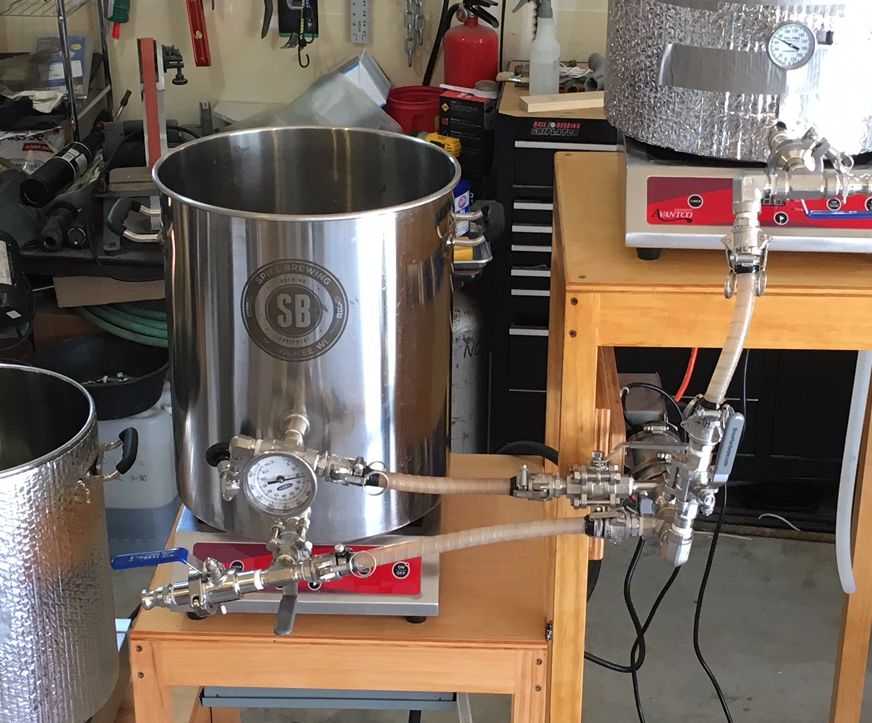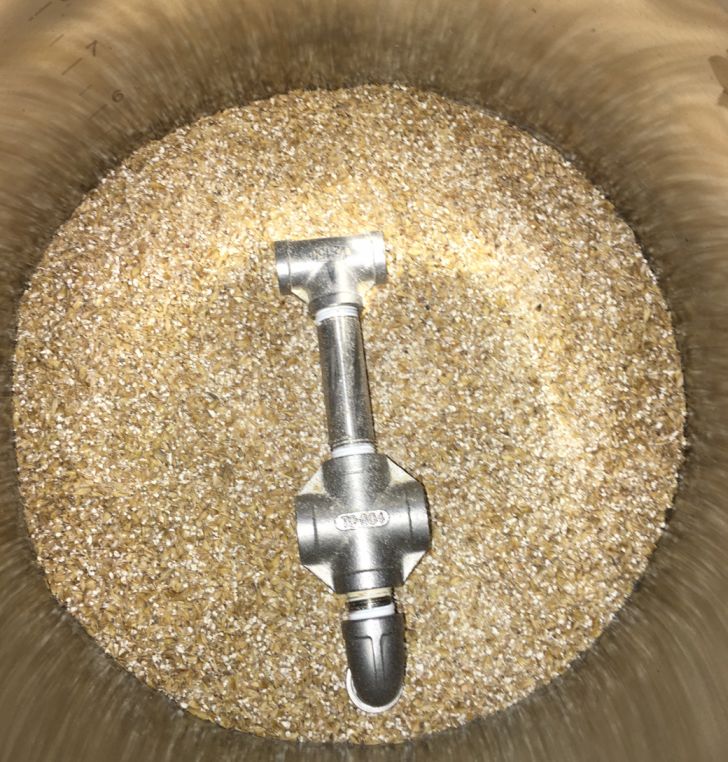Not quite understanding the setup....I have exactly the same locline sparge/recirc arm, exactly the same cooler. Weird.

So...you're doing a fly sparge? I'm not quite sure what I'm seeing there.
So....no recirculation during the mash, correct? Using the cooler to insulate the mash, no additional heat source during the mash, such as HERMS?
I would not use exposed elements to heat up a mash, but that's me. Mash is very good at insulating; simply heating the mash will require stirring, a fair amount of it, to bring the mash up to temp.
<thinking cap on>I have a 5500-watt element in my BK, and it'll heat 8 gallons of strike water about....oh, maybe 4 degrees a minute. Yours is a little lower, but not much, 4800 watts, so call it pretty similar. You'd heat up....lessee, 17 or so gallons of mash in a BK from, say, 150 to 170+ in....maybe 5 or 6 minutes if it were just the water, but the mash is a tough nut to crack in terms of heat transfer. You'll overcook the mash on the bottom, and pretty quickly. You'd have to stir pretty aggressively to keep the mash moving past the elements....<off>
I've done BIAB, as well as a version of BIAB where I'm lautering off from the cooler (exactly the same one as yours) but using the bag to line the cooler. Sort of a combination of BIAB and standard lautering off of a mash. Works, too, btw.
So, I'm back to....is it necessary to do a mashout? You could get a bag to line the cooler (mine was made by Michael Wilser, cost me something like circa $30. And he has the pattern, same cooler.

I'm wondering if maybe you're overthinking this a bit....




































![Craft A Brew - Safale S-04 Dry Yeast - Fermentis - English Ale Dry Yeast - For English and American Ales and Hard Apple Ciders - Ingredients for Home Brewing - Beer Making Supplies - [1 Pack]](https://m.media-amazon.com/images/I/41fVGNh6JfL._SL500_.jpg)

























